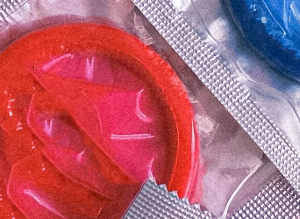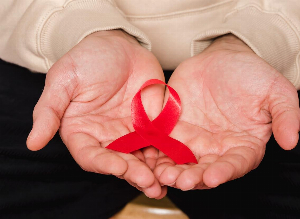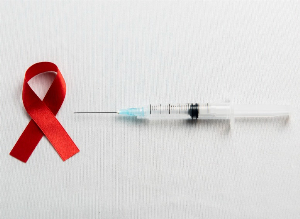Everything you need to know about HIV treatments, PrEP and viral load!
Published Jul 19, 2021 • By Aurélien De Biagi
The human immunodeficiency virus (HIV) destroys the immune defenses of affected patients. As a result, in the final phase of the condition, acquired immunodeficiency syndrome (AIDS), patients often fall victim to opportunistic infections (pathogens that take advantage of the weakened immune system).
In 2017, nearly 37 million people worldwide were living with HIV and 940,000 lost their lives because of it. Today, preventive and curative treatments allow patients to live an almost normal life but do not completely destroy the virus. While waiting for an effective virucidal agent to be discovered for HIV, we outline the various treatments for this virus in this article.
Read our article to learn more!

What is HIV?
The human immunodeficiency virus (HIV) is a retrovirus, a virus whose genetic material consists of RNA. It infects lymphocytes (white blood cells), immune cells, carrying the CD4+ receptor (a surface protein found in certain types of lymphocytes). The final stage of HIV is acquired immunodeficiency syndrome (AIDS).
When a patient is infected with HIV, the virus will insert itself into cells with the CD4+ marker, creating reservoirs in these cells. Once inside, the virus will, through various mechanisms, transcribe its RNA into DNA and integrate its genome into the cellular genome. All the cellular machinery will thus be diverted towards the production of new viruses. These viruses will then be released outside the cell to infect others.
If you'd like to learn more about HIV in detail, feel free to read our article about HIV here.
What is viral load?
Viral load refers to the number of virus copies found in one milliliter of blood. It is measured throughout the patient's care pathway and particularly after the introduction of a new treatment. It is used to measure the effectiveness of the treatment.
Ideally, viral load should be below 50 copies/milliliter of blood, a level at which it is said to be "undetectable". A treatment must enable an undetectable viral load to be obtained within 6 months of its introduction in order to be considered effective.
Conversely, a viral load of more than 100,000 copies/milliliter is a cause for concern and requires treatment regardless of the white blood cell count (another marker of the severity of HIV infection).
Furthermore, it has been shown that people who are HIV-positive but have an undetectable viral load are not infectious. Thus, the systematic diagnosis and treatment of patients allows the prevention of new infections.
What are the treatment options for HIV?
Treatment for HIV is based on antiviral drugs, called antiretroviral therapy (ART). They have two objectives: to maintain an undetectable viral load (less than 50 copies/mL) and a sufficient level of CD4+ lymphocytes to have optimal immunity (500/mm3 of blood). However, they do not eradicate the virus and therefore do not cure the disease.
HIV treatments are always used in combination with multitherapy (a combination of 3 or 4 antiviral drugs). The simultaneous use of several molecules helps to prevent the development of resistance to a particular drug. Indeed, it has been shown that when 3 or 4 antivirals are used, the virus cannot develop resistance against them. This ensures that the effectiveness of the treatments is maintained over time.
There are different classes of antivirals used in ART, namely:
- Nucleoside or nucleotide reverse transcriptase inhibitors (NRTIs or 'nukes'): Zidovudine, stavudine and didanosine are often less prescribed today due to their potential side effects. Molecules such as tenofovir, lamivudine, abacavir and emtricitabine have replaced them because they have fewer side effects. These drugs inhibit a viral enzyme: reverse transcriptase. This enzyme is essential for the reverse transcription of the viral genome (from RNA to DNA), which then integrates it into the cellular genome.
- Nonnucleoside reverse transcriptase inhibitors (NNRTIs or 'non-nukes'): These include efavirenz, nevirapine, doravirine and etravirine. These drugs act directly on reverse transcriptase and inhibit it in a non-competitive manner, unlike NRTIs which act competitively.
- Protease inhibitors (PIs): These include atazanavir, darunavir, lopinavir and ritonavir (used either as an antiviral or in low doses as a booster). These drugs act on protease, inhibiting its action and thus preventing the viral replication cycle from taking place.
- Integrase inhibitors (IIs): Raltegravir and dolutegravir inhibit integrase, a viral enzyme responsible for integrating viral DNA (freshly transcribed from RNA by reverse transcriptase) into the cellular genome.
- Fusion inhibitors (FIs): The only example of fusion inhibitors currently used is enfuvirtide. This drug prevents the virus from entering the cells.
- Chemokine receptor antagonists (CRAs): These drugs inhibit the entry of the HIV virus into the host cell. However, they are only effective against viruses with CCR5 tropism (identified by blood test). The drug prescribed from this class for HIV is maraviroc (Selzentry®).
Thus, HIV treatment will combine several drugs from these classes. The most common combination is two NRTIs and one NNRTI or a protease inhibitor boosted with ritonavir. Ritonavir acts as a booster for the protease inhibitor, which means that it maintains an effective concentration in the blood for longer, resulting in fewer doses.
What is PrEP?
PrEP or pre-exposure prophylaxis is a medicine taken by people at risk for HIV to reduce the risk of getting HIV from intercourse or injection drug use.
Those at high risk of HIV infection may include:
- Those who have had anal or vaginal sex in the past 6 months and:
- Have a sexual partner with HIV (especially if the partner has an unknown undetectable viral load)
- Have not consistently used a condom
- Have been diagnosed with a sexually transmitted infection (STI) in the past 6 months
- Those who inject drugs and:
- Have an injection partner with HIV, or
- Share needles, syringes, or other equipment to inject drugs
- Those who have been prescribed PEP (post-exposure prophylaxis) and:
- Report continued risk behavior, or
- Have used multiple courses of PEP
PrEP is taken in single tablet form and consists of tenofovir and emtricitabine, two NRTIs used to treat HIV. Branded drugs Truvada®, Descovy®, or their generics may be given.
PrEP can only be prescribed by a healthcare provider, and it is important to note that in order to receive PrEP, the absence of infection with the virus must be confirmed beforehand. Taking PrEP when you are HIV positive can cause drug resistance. While taking PrEP, you will have to visit your healthcare provider every 3 months for follow-ups, HIV tests, and prescription refills.
Most insurance plans and state Medicaid programs cover PrEP, but other programs also exists that provide PrEP for free or at a reduced cost:
- Ready, Set, PrEP is a program making the medication available at no cost for those who qualify
- Co-pay assistance programs can help lower the costs of PrEP; income is not a factor in eligibility.
- A number of states have PrEP assistance programs covering medication, clinical visits and lab costs, or both.
Sources:
- BHIVA guidelines for the treatment of HIV-1-positive adults with antiretroviral therapy, BHIVA
- How HIV treatment works, Terrence Higgins Trust
- Deciding to take PrEP, CDC
- Starting and stopping PrEP, CDC
- Paying for PrEP, CDC
- Inhibiteurs de la transcriptase inverse du VIH, Site du collège national de pharmacologie médicale
- Inhibiteurs de la protéase du VIH, Site du collège national de pharmacologie médicale
- Sida et VIH, INSERM
- Infection par le VIH/sida, Vidal
- La prévention de l'infection par le VIH/sida, Vidal
- Le traitement de l'infection par le VIH/sida, Vidal
- Les médicaments contre le VIH/sida, Vidal
Comments
You will also like

Testimonial - Castleman disease: "I was relieved to finally find out what I'd been suffering with!".
Jun 8, 2022

 Facebook
Facebook Twitter
Twitter

